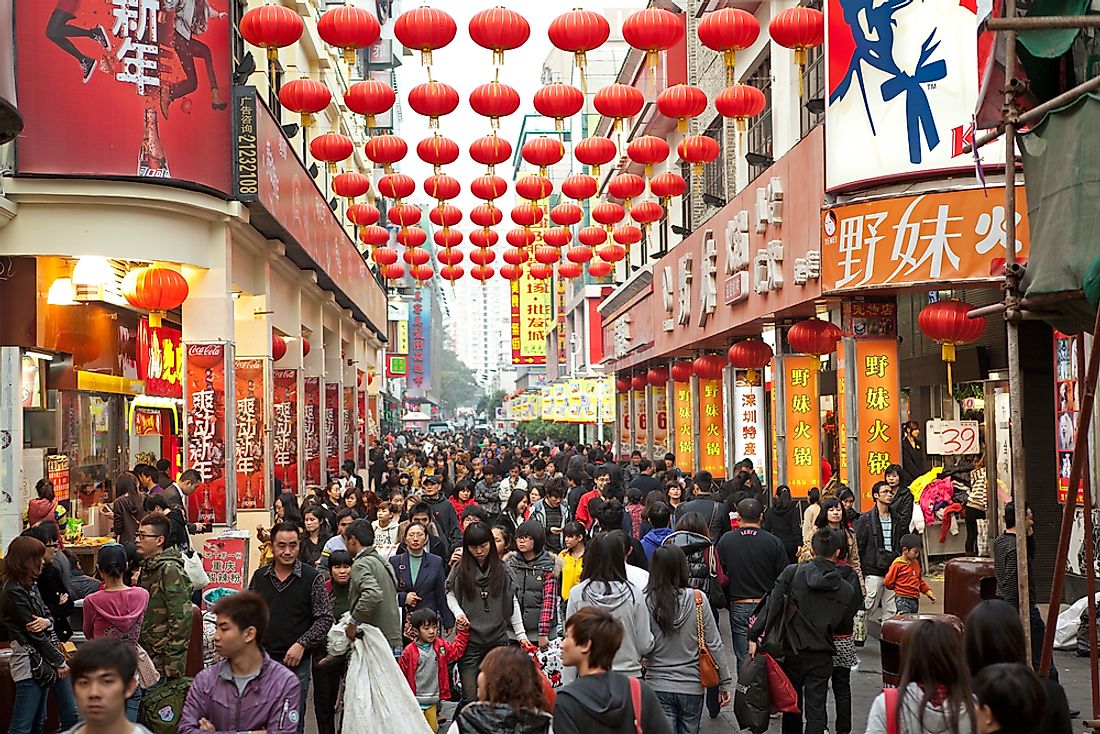What is the Population of China?

China, officially known as the People’s Republic of China, is the world’s most populated country with a population of approximately 1.4 billion people. It is one of the only two countries (the other being India) whose population has passed the one billion mark. The population of China is about four times that of the United States although the US is slightly larger than China by total surface area. The figure quoted as the population of China does not include some of the regions such as the Taiwan, Macau, and Hong Kong which are governed separately.
Understanding the Population of China
To understand the demographics and population of China, it is important to first understand its government. China is governed by the Communist Party of China and headquartered in Beijing. The government exercises jurisdiction over 22 provinces, five autonomous regions, four municipalities, and two special administrative areas (Macau and Hong Kong). China also has laid claim over the Island of Taiwan controlled by a separate political entity. Therefore, the population of China is a bit confusing and sometimes contested. However, the population of 1.4 billion people excludes those living in Macau, Hong Kong, and Taiwan.
Population Density
The People’s Republic of China covers an area of approximately (3.7 million square miles), making it the world’s 4th largest country by area. With a population of about 1.4 billion people, the country has a population density of 375.5 people per square mile (145/sq. km), making it the 83rd most densely populated country. However, in large urban areas of China, the population density is much higher. For instance, Shanghai, the country’s largest city, has a population density of 9,900 people per square mile.
Population Growth
The population history of China has been influenced by famine, war, and natural disasters. China has felt the effects of some of the worst wars in history. China experienced rapid population growth in the 20th century, forcing the Chinese government to limit population growth by introducing the “one-child policy.” Couples who agreed to have just one child were rewarded with cash bonuses and other benefits such as access to housing. However, the scheme was contested in the rural areas. Families who breached the policy tend to lie about the size of their families during the census poll, making the population of China a bit skewed. The one-child policy was ended by the government in 2016. China also has an abnormal male to female ratio. While in most countries more girls are born than boys, the reverse is true in China, probably because of preference for boys by most families. In China, one child is born every two seconds and one death recorded every three seconds. Also, one person leaves the country every minute. Thus, China has a net gain of one person per five seconds.
Population Projection
From 2000 to 2010, China recorded a population growth of roughly 5.8%. The growth rate has slowed significantly since the introduction of the one-child policy. The slow population growth is projected to continue until 2030 after which the population is expected to start decreasing. India is expected to replace China as the most populous country in the world in the next couple of decades.
What is the Population of China?
| Country | Population |
|---|---|
| China | 1,384,688,986 |











